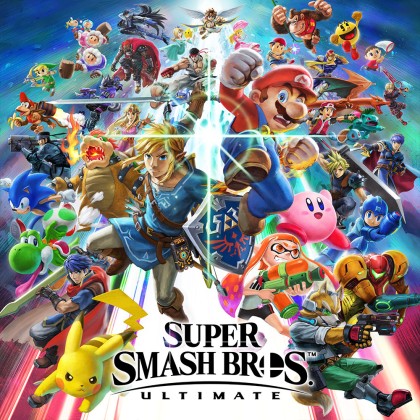‘Smash Bros.’ franchise celebrating 20 years
May 6, 2019
On April 26, 1999, Nintendo released “Super Smash Bros.” for the Nintendo 64 console in North America, and the series has evolved across five different titles on six different systems. Each game adds a new layer of gameplay to the series alongside new characters, songs, stages, game modes, and items.
Over the last 20 years the Super Smash Bros series has cemented itself as one of the world’s most popular fighting games. It continues to be played both casually and competitively standing up against other popular fighting games.
For the 20th anniversary, the Rebellion is looking back at each game in the series and what made it unique.
“Super Smash Bros.” started the series with 12 characters and nine stages from 10 different series and it featured four different one-player modes and one mode for multiple players. The game set itself apart from other fighting game with the fact that the only way to K.O. opponents was to knock them off the stage instead of lowering a health bar.
Two years later “Super Smash Bros. Melee” was released for the Nintendo GameCube in North America on Dec. 3, 2001. Adding 14 newcomers and including all 12 original characters made the gameplay very different, as new characters meant new ways to play. To help the returning characters keep up, they were improved upon with new moves which farther altered gameplay. This game is still being played competitively at fighting game tournaments as many players believe it is the best game in the series.
“Super Smash Bros. Brawl” was released on the Nintendo Wii on March 9, 2008, bringing with it major changes to the Super Smash Bros formula of gameplay. Five veterans from Melee did not return, but 18 newcomers were added.
Brawl not only added new characters but also added a custom stage builder, Final Smash moves, and a story mode known as the Subspace Emmisary. Brawl has been dubbed “the Great Divider” in the Smash community because it is the slowest paced game but also the one that added many things that remain in Smash to this day.
Brawl was also the first game to include characters not owned by Nintendo: Solid Snake from the “Metal Gear Solid” series and Sonic the Hedgehog from the series of the same name.
The fifth Smash game was the first one released on a handheld when it came out on Oct. 3, 2013 for the Nintendo 3DS. The same game was released a year later on Nov. 24, 2014 for the Wii U with more music tracks and stages.
Both versions of the game contained the same 34 veterans and 18 newcomers. Smash 4, as fans call it, was the first game in the series to have downloadable content (DLC) available which at the time was a huge game changer because it added three veterans and three newcomers to the roster.
Custom moves for characters and customizable Mii fighters were also a major change to the Smash Bros formula because players could customize the already existing fighters and also make their own based on their Miis. A Mii is a customizable avatar made by players on Nintendo systems.
“Super Smash Bros. Ultimate” was released on Dec. 7, 2018, for the Nintendo Switch making it the latest entry in the series. All 65 veterans returned including the DLC characters from the previous game and 17 newcomers were also added.
Two of the current newcomers are DLC with four more DLC newcomers planned. Ultimate is the biggest Smash game to date with modes such as the Spirit Board, World of Light, Smash Down, Squad Strike, a new stage builder, and multiple modes for offline and online for multiple players.
The game has been the most popular game in the series since Melee due to huge amount of support it has been receiving from players and developers alike. The online community is extremely large thanks to modes such as Elite Smash, Quickplay Battles, Battle Arenas, and the ability to share custom Mii fighters, custom stages, and recordings and images of battles online via the Nintendo Switch and the Nintendo Switch Online mobile app.
Super Smash Bros seems to be a series that will continue for a long time. It’s perfect for competitive and casual gamers of all ages and it is of course one of Nintendo’s best selling series to date.
